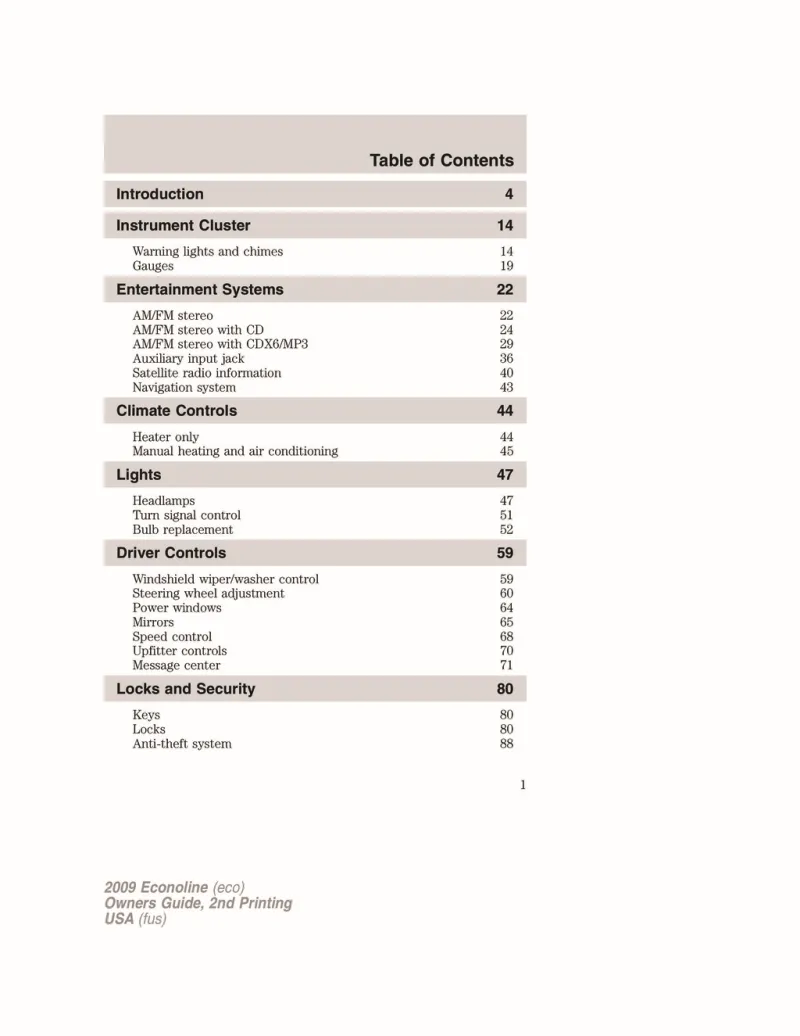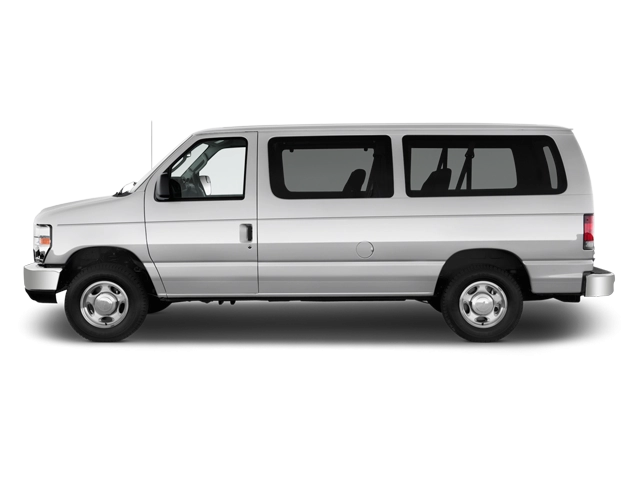2009 Ford E450 Owner's Manual

Table of Contents
2009 Ford E450 Overview
Introduction
The 2009 Ford E450 is a robust and reliable full-size van that exemplifies Ford’s commitment to versatility and performance. Designed primarily for commercial use, this truck can also serve as a dependable family vehicle or a spacious transport option for those looking to convert it into a camper or shuttle vehicle. With its impressive styling and practical features, the E450 appeals to a variety of needs, making it a top choice in its class.
Powertrains
The 2009 E450 is equipped with two robust powertrain options to cater to different performance requirements. Standard is a 5.4-liter V8 engine that generates 255 horsepower, providing ample power for heavy loads and towing tasks. For those needing more strength, an optional 6.8-liter V10 engine is available, delivering a beefy 305 horsepower. Both engines are paired with a five-speed automatic transmission, ensuring smooth gear shifts and responsive acceleration. The E450 also features a rear-wheel-drive configuration that enhances stability when loaded.
Trims
Features
Standard features of the 2009 E450 include power windows and locks, air conditioning, and a basic audio system. Higher trims offer additional options such as upgraded audio systems, navigation, and advanced safety features such as traction control and ABS brakes. Its spacious interior allows for extensive cargo space or upgraded seating arrangements, making it adaptive for various needs.
Owner's Manual
The owner's manual for the 2009 Ford E450 provides detailed information on operation, maintenance, and troubleshooting. It serves as an essential guide for owners, ensuring they can optimize their vehicle’s performance and longevity. With clear illustrations and easy-to-understand language, the manual covers everything from routine service checks to safety recommendations, making the ownership experience smooth and informative.
User manual download
The Ford E450 owner manual for the 2009 model year is to be found in PDF downloadable format on this page. The owner manual for the model year 2009 is free and in English, but the repair manuals are usually not easy to get and may cost more.
Manual Questions
Fill the form below and someone will help you!

